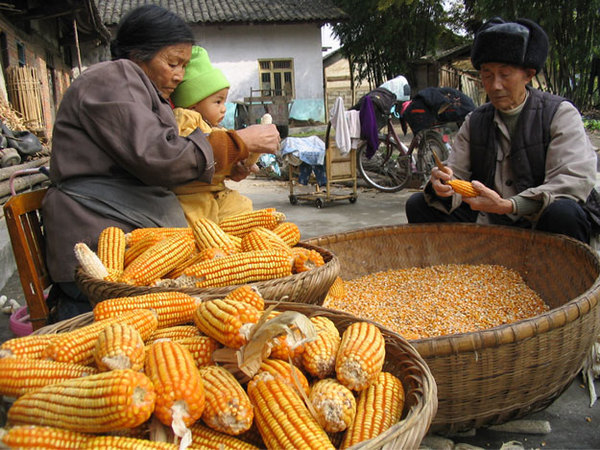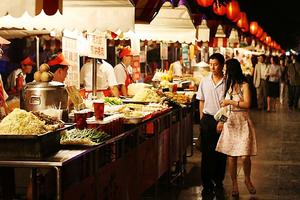Saturday, September 29, 2012
Sunday, September 16, 2012
Why Are The FAO And The EBRD Promoting The Destruction Of Peasant And Family Farming?
Common Statement Of La Via Campesina - GRAIN - Friends Of The Earth International (FoE) - Coordinadora Latinoamericana De Organizaciones Del Campo (CLOC) - Re:Common -World March Of Women -ETC Group -Latin American Articulation Of Movements Toward ALBA
(14 September 2012) We are shocked and offended by an article co-signed by Jose Graziano da Silva, Director General of the UN's Food and Agriculture Organisation (FAO), and Suma Chakrabarti, President of the European Bank for Reconstruction and Development (EBRD), that was pusblished in the Wall Street Journal on September 6, 2012.1 In the article, they call on governments and social organisations to embrace the private sector as the main engine for global food production.
While referring specifically to Eastern Europe and North Africa, the heads of these two influential international agencies make a clear call for a world wide increase in private sector investment and land grabbing. They say that the private sector is efficient and dynamic and call on companies to "double investment in the land itself". Meanwhile, they dismiss peasants and those few remaining policies that protect them as burdens "holding back" agricultural development that should be eliminated. To do so, they urge governments to facilitate the growth of big agribusiness. Their article was published in the context of a joint FAO and EBRD conference in Istanbul on September 13th, which they describe as the largest and most important gathering of companies and decision-makers in agribusiness.
Graziano da Silva and Chakrabarti make a number of biased claims in the article that obscure the reality when it comes to agriculture and food. They point to Russia, Ukraine and Kazakhstan as successful examples of agribusiness that have transformed these countries from "the agricultural wastelands of the 1990s" into "leading grain exporters." But at no time do they mention that the official statistics from all three countries show that small farmers and peasants are more productive than big agribusiness.
Peasants and small farmers, especially women, account for over half of Russia's agricultural production but occupy only a quarter of the agricultural lands. In the Ukraine, they produce 55% of the agricultural output on only 16% of the land, while in Kazakhstan, where they occupy half of the land, they account for 73% of agricultural production. The fact is that these countries are fed by their peasants and small farmers. And this is true the world over. Wherever offical data are available, as in the EU, Colombia and Brazil, or in the studies undertaken in Asia, Africa and Latin America, peasant farming is shown to be more efficient than large-scale agribusiness.
Contrary to what is claimed by the Director General of the FAO, those who really have the capacity to feed the world are the world's men and women farmers and peasants. The expansion of agribusiness has only exacerbated poverty, destroyed the potential for dignified rural livelihoods, increased pollution and environmental destruction, and brought back the scourge of slave labor and a series of recent food and climate crises.
For social movements and the peasants and small farmers of the world, it is unacceptable and even incomprehensible for a Director General of the FAO to be promoting the destruction of peasant farming and an increase in land grabbing. It is particularly troubling for this to occur after three years of careful, hard work by La Via Campesina and other organisations in constructing the FAO's voluntary guidelines to protect communities against land grabs and after Graziano da Silva had repeatedly assured farmers' organisations during his campaign for Director General of the FAO that he would promote and validate the importance of peasant agriculture and the critical role small farmers must play in food production.
The language used by Graziano da Silva and Chakrabarti is offensive. Phrases like "fertilize this land with money" or "make life easier for the world's hungry" call into question the FAO's ability to do its job with the necessary rigor and independence from large agribusiness companies and fulfill the UN mandate to eradicate hunger and improve the living conditions of rural people.
We wonder what the FAO means by the "International Year of Family Farming" when its Director General says that the obstacles to improving agricultural production are "relatively high levels of protection, lack of proper irrigation, [and] small and uneconomically sized farms." This vision and the FAO's subservience to the demands and interests of greedy investors undermines all the work at conciliation that has taken place in recent years between farmers' organisations and the FAO. And it raises questions about why the FAO has not developed a proposal for concrete and effective action to promote peasant agriculture and family farming as a fundamental response to a global food crisis that is once again enriching transnational banks and corporations.2 Where, we wonder, will peasant families go if these plans to transform their lands into industrial megafarms are successful?
Beyond the issue of the FAO abandoning its mission, it is also of deep concern that the EBRD is playing such an active role in profitting from and promoting investments in land grabbing and the take over of agriculture by big agribusiness. The EBRD's stance is all the more dangerous now that its area of operation is expanding in North Africa.
What is needed for agriculture and the planet is just the opposite of what Chakrabarti and Graziano da Silva propose. Humanity and those suffering from hunger need the agro-cultures of rural areas, which represent half the world's population and make peasant farming possible, to be protected and promoted-- because peasant farming is more efficient and productive, because it produces at least half of the global food supply and most of the employment in rural areas, and because it can cool the planet.
The livelihoods of peasants and indigenous peoples and their food production systems cannot be destroyed to create a new source of mega profits for a tiny group of elites. We need comprehensive and effective agrarian reforms that put lands and territories back into the hands of rural peoples. The commodification and grabbing of lands must be stopped and reversed. We do not need agribusiness; we need more communities and more peasant and indigenous families farming with dignity and respect.
Farmers feed the world
Agribusiness grabs it
2 See, for example, James Cusick, "We'll make a killing out of food crisis, Glencore trading boss Chris Mahoney boasts", The Independent, Londres, 23 August 2012,http://www.independent.co.uk/news/world/politics/well-make-a-killing-out-of-food-crisis-glencore-trading-boss-chris-mahoney-boasts-8073806.html; Tom Bawden, "Barclays makes £500m betting on food crisis", The Independent, Londres, 1 September 2012,http://www.independent.co.uk/news/business/news/barclays-makes-500m-betting-on-food-crisis-8100011.html; and Peter Greste, "Rising food prices hit Nairobi slums", Al Jazeera, Doha, 6 September 2012, http://www.aljazeera.com/video/africa/2012/09/201296195748591887.html.
Saturday, September 15, 2012
The Fed and the Crisis
Jane D'Arista commentary on the role of the US Federal Reserve in managing the crisis of global capitalism
Friday, September 7, 2012
Who will feed China: Agribusiness or its own farmers? Decisions in Beijing echo around the world
From Grain - August 2012
 (Photo: Reuters)
(Photo: Reuters)When China began importing soybeans as animal feed in the late 1990s, it ushered in one of the most dramatic agricultural transformations the world has ever seen. On the other side of the world, 30 million hectares of farms, forests, savannahs and pastures in the Southern Cone of Latin America were converted to soy plantations to provide China’s new factory farms with a cheap source of feed. And within China, low prices paid to farmers and other policies favouring large agribusinesses pushed millions of households out of meat production. Corporations and large commercial farmers made fortunes, but rural communities, both in China and the Southern Cone, paid the price (see Box 1, 2 & 4).
Cheap meat for China’s growing urban population was supposed to be the payoff. But in 2008, prices for pork spiked because of a massive disease outbreak that swept through China’s pork industry, and now the country is on the verge of a more serious round of food inflation as a drought in the US causes global prices for soybeans to surge. On top of this, China’s consumers have had to contend with numerous food safety scandals and environmental disasters brought about by the shift to industrial meat production.
 This year China surpassed the US as the world's largest grocery market. If the pace continues, Chinese consumers will spend US$1.6 trillion on groceries in 2015. (Photo: http://www.starfish-studio.com/2007/06/beijing-china.html)
This year China surpassed the US as the world's largest grocery market. If the pace continues, Chinese consumers will spend US$1.6 trillion on groceries in 2015. (Photo: http://www.starfish-studio.com/2007/06/beijing-china.html)
The problems generated at home and abroad by China’s growing dependence on imports of feed crops will get much worse if China continues to open its market to imports of maize, the other major crop used for industrial feeds. In 2012, China will import a record five million tonnes of maize, and it is on track to buy another seven million tonnes in 2013. This is only around 5% of national maize consumption, but it is still more maize than China imported during all previous 25 years combined and it is already affecting global prices.[1]
China is now the world’s largest global food market. What Chinese people eat has repercussions on everyone, because of the increasingly global reach of how and where that food is produced. If the Chinese government opens the country up to maize imports as it did with soybeans, it could unleash another global agricultural transformation on par with what occurred with soybeans. Recent developments show that this is already starting to happen.
Subscribe to:
Posts (Atom)


